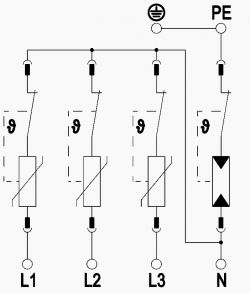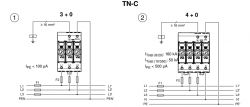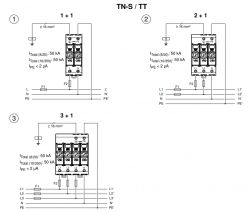Hello. I know that the topic has been discussed many times, but after reading this huge number of posts, I still have doubts about the purchase of the limiter. Installation site switchgear in a TN-C house with a PEN split into PE and N, power supplied by earth from the meter box at the plot border, further to the ground under the road, and then to the overhead network. As I have already read, it should be a 3P limiter (although sentences are divided), protection type B + C (T1 + T2 and sentences are also divided here) which should be based on a spark gap. And now questions arise. Are my assumptions correct? What else should you pay attention to when choosing? And what kind of protectors to buy? I found DEHNshield DSH TNC 255 but what other companies are recommended because there were opinions on forums that manufacturers such as Hager, Legrand make such limiters just to have them on offer.
Regards.
Regards.





